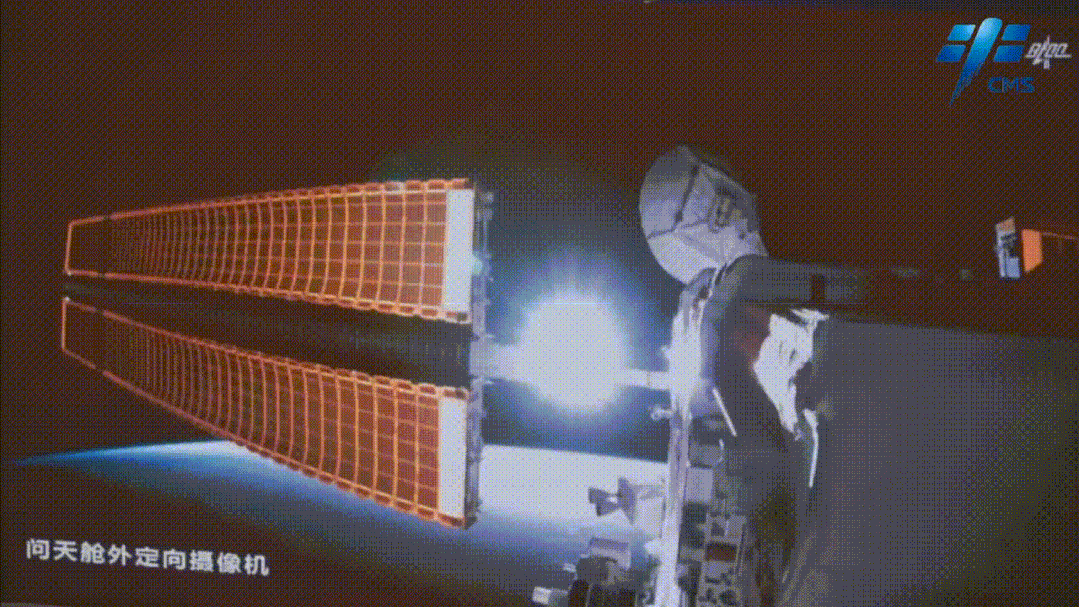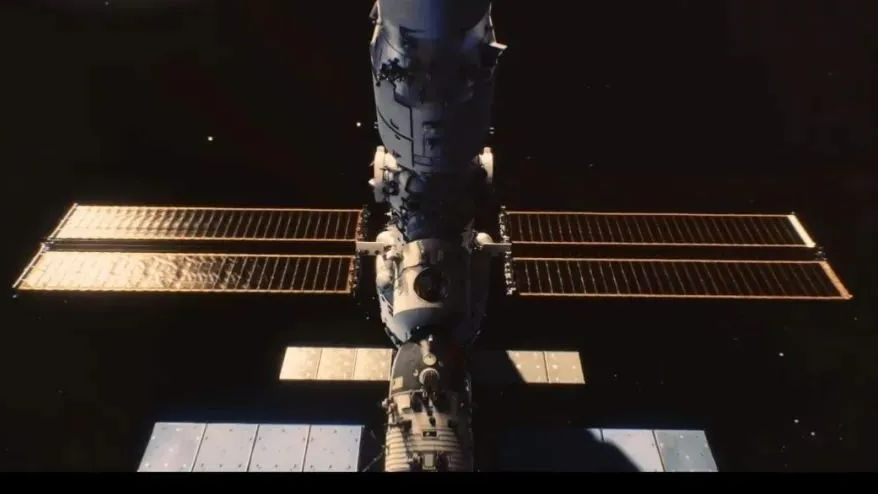
A solar array is shown outside of Wentian lab module of China's space station.
A solar array is shown outside of Wentian lab module of China's space station.
As China's first lab module Wentian, belonging to its space station – also the largest and heaviest spacecraft – has been sent to the space, the solar wings installed on it has also grabbed attention since it's the largest flexible solar array the country ever used for a spacecraft.
The wingspan of the pair of solar panels on the Wentian lab module can reach over 55 meters long. Each solar wing spreads to 110 square meters when fully unfolded – almost as large as a decent sized apartment with a living room and three bedrooms. The total area of the solar array will reach as large as 400 square meters when three main modules including the core module and the two lab modules are assembled.
Wentian's solar wing is two times larger than that of the core module Tianhe. Only four of such solar wings can generate 80 percent of the power for the combination of the core module and two lab modules.

There are wrist-like units designed to help rotate Wentian's two 27-meter-long wings by 360 degrees to face the sunlight in unblocked positions.
There are wrist-like units designed to help rotate Wentian's two 27-meter-long wings by 360 degrees to face the sunlight in unblocked positions.
There are a slew of dark-color glass-like pieces aligned on the solar wings, forming a solar array which can achieve a high power conversion efficiency of 30 percent. Traditional solar panels only convert 15-22 percent of the sun's energy into electricity.
The power supply capacity of the batteries supported by the solar wings can generate an average of over 430 kilowatt electricity daily – enough for the consumption of an ordinary household for one and a half months.
The solar wings are installed at the tail of the Wentian module to avoid being blocked by each other at certain angles from the sun and to maximize the power generation efficiency .

The flexible solar wings are used for lighter weight and higher power compared to traditional rigid solar wings.
The flexible solar wings are used for lighter weight and higher power compared to traditional rigid solar wings.
Flexible solar wing technology
It is not the first time that China has adopted flexible solar wings as an energy source for a spacecraft. In fact, the flexible solar wings were first used on the core module Tianhe with each wing measuring 67 square meters.
The application of solar wings for China's space projects has witnessed the country's ceaseless advance in solar array technology.
It developed its first generation rigid solar array technology for the Shenzhou manned spaceship project. Then the second generation of semi-rigid solar array technology was adopted for the Tianzhou cargo spacecraft.
The flexible solar array technology is the third generation technology which has been used on all the modules of the space station.
The estimated electricity consumption for three taikonauts living and working in the space station for one day is roughly 320 kilowatt. The traditional rigid or semi-rigid solar wings failed to meet the demand due to the limitation of its size, weight and power. That's where the flexible solar wings came in.
Compared with the traditional rigid and semi-rigid solar cell wings, the flexible wings are small in size, large in deployment area, and high in power-to-weight ratio.
The flexible wing is only one book thick after being folded, which is only 1/15 of the rigid solar wing. During the launch, the flexible solar wings were first folded tightly like a closed accordion. Each panel is less than one millimeter thick, thus reducing the volume of the folded arrays to just 20 percent the volume of traditional solar panels.
It is made of ultra-thin lightweight composite materials, and the coating thickness of the glue layer used to protect the space environment is also strictly controlled.
(All photos courtesy of the China Manned Space Agency)
Read More: First bi-axial solar array drive assembly deployed

